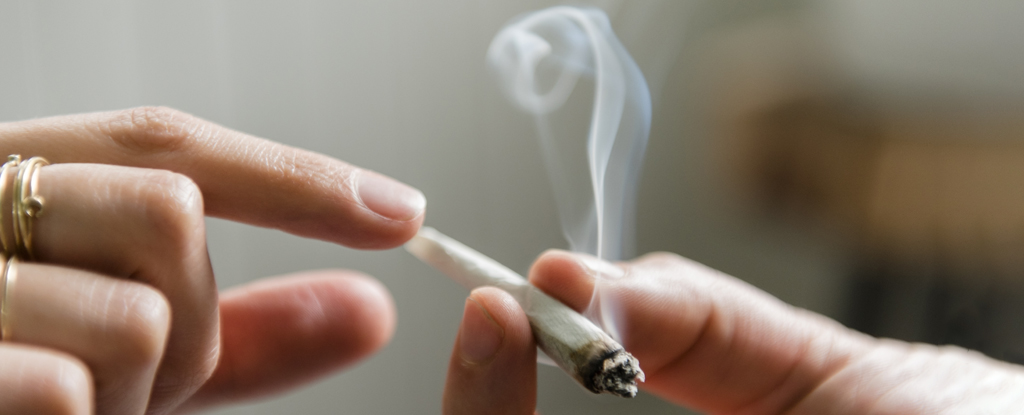Though tobacco use is declining among adults in the US, cannabis use is increasing. Laws and policies regulating the use of tobacco and cannabis are also moving in different directions.
Tobacco policies are becoming more restrictive, with bans on smoking in public places and limits on sales, such as statewide bans on flavored products. In contrast, more states are legalizing cannabis for medical or recreational use, and there are efforts to allow exceptions for cannabis in smoke-free laws.
These changes mean an increasing number of people are likely to get exposed to cannabis smoke. But how safe is direct and secondhand cannabis smoke?
I am a primary care doctor and researcher in a state where cannabis is now legal for medical and recreational use. My colleagues and I were interested in how opinions about tobacco and cannabis smoke safety have been changing during this time of growing cannabis use and marketing.
In our survey of over 5,000 U.S. adults in 2017, 2020 and 2021, we found that people increasingly felt that exposure to cannabis smoke was safer than tobacco smoke. In 2017, 26% of people thought that it was safer to smoke a cannabis joint than a cigarette daily. In 2021, over 44% chose cannabis as the safer option. People were similarly more likely to rate secondhand cannabis smoke as being "completely safe" compared with tobacco smoke, even for vulnerable groups such as children and pregnant women.
Despite these views, emerging research raises concerns about the health effects of cannabis smoke exposure.
Do opinions on cannabis match the science?
Decades of research and hundreds of studies have linked tobacco smoke to multiple types of cancer and to cardiovascular disease. However, far fewer studies have been done on the long-term effects of cannabis smoke. Since cannabis remains illegal at the federal level, it is more challenging for scientists to study.
It has been particularly hard to study health outcomes that may take a long time and heavier exposure to develop. Recent reviews of research on cannabis and cancer or cardiovascular disease found those studies inadequate because they contained relatively few people with heavy exposure, didn't follow people for a long enough time or didn't properly account for cigarette smoking.
Many advocates point to the lack of clear findings on negative health effects of cannabis smoke exposure as proof of its harmlessness. However, my colleagues and I feel that this is an example of the famous scientific quote that "absence of evidence is not evidence of absence."
Scientists have identified hundreds of chemicals in both cannabis and tobacco smoke, and they share many of the same carcinogens and toxins. Combustion of tobacco and cannabis, whether by smoking or vaping, also releases particles that can be inhaled deep into the lungs and cause tissue damage.
Animal studies on the effects of secondhand tobacco and cannabis smoke show similar concerning effects on the cardiovascular system. These include impairments in blood vessel dilation, increased blood pressure and reduced heart function.
Though more research is needed to determine the risk of lung cancer, heart attacks and strokes posed by cannabis smoke, what is already known has raised concerns among public health agencies.
Why do opinions on cannabis matter?
How people perceive the safety of cannabis has important implications for its use and public policy. Researchers know from studying cannabis and other substances that if people think something is less risky, they are more likely to use it. Opinions on cannabis safety will also shape medical and recreational cannabis use laws and other policies, such as whether cannabis smoke will be treated like tobacco smoke or whether exceptions will be made in smoke-free air laws.
Part of the complexity in decisions about cannabis use is that, unlike tobacco, clinical trials have demonstrated that cannabis can have benefits in certain settings. These include managing specific types of chronic pain, reducing nausea and vomiting associated with chemotherapy and increasing appetite and weight gain in those with HIV/ AIDS. Notably, many of these studies were not based on smoked or vaped cannabis.
Unfortunately, though Googling cannabis will return thousands of hits about the health benefits of cannabis, many of these claims aren't supported by scientific research.
I encourage people who want to learn more about the potential benefits and risks of cannabis to talk to health care providers or seek sources that present an unbiased view of the scientific evidence. The National Center for Complementary and Integrative Health has a good overview of studies on cannabis for treatment of a variety of medical conditions, as well as information about potential risks.



Recommended Comments
There are no comments to display.
Join the conversation
You can post now and register later. If you have an account, sign in now to post with your account.
Note: Your post will require moderator approval before it will be visible.